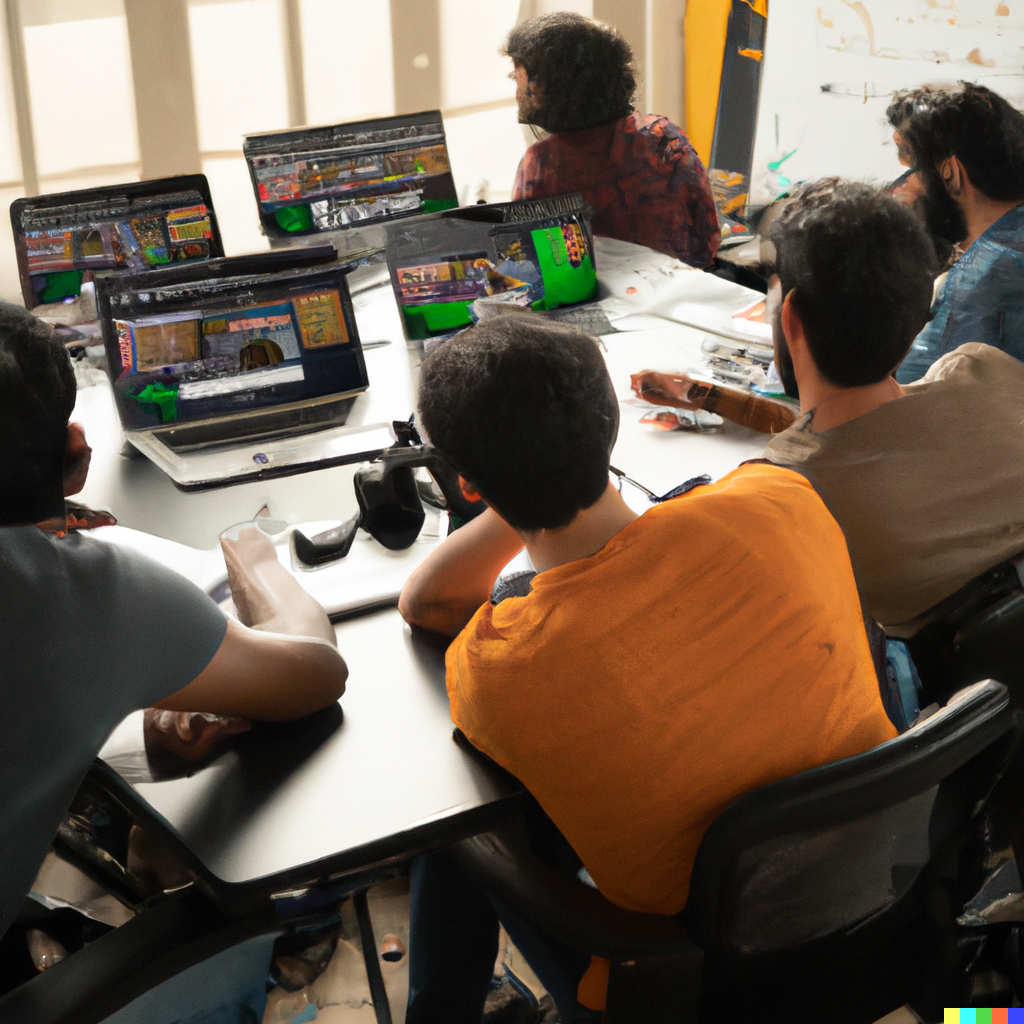
Implementing AI in Your Film Production Company
As the film industry continues to grow, the demand for high-quality content has increased dramatically. However, producing a great film is not an easy task. It requires a significant amount of resources, including time, money, and expertise. This is where Artificial Intelligence (AI) comes in handy. AI has the potential to revolutionize the film industry and help production companies scale their operations. In this article, we'll discuss how to use AI to scale your film production company and stay ahead of the competition.

Understanding AI and Its Role in Film Production
Artificial Intelligence (AI) is a branch of computer science that deals with the development of intelligent machines that can perform tasks that would typically require human intelligence. AI is becoming increasingly popular in various industries, including film production.
AI can help film production companies in several ways. For example, it can be used to automate tedious and time-consuming tasks, such as editing and post-production. AI can also be used to enhance the visual effects of films, making them more engaging and visually appealing. Additionally, AI can be used to analyze data and provide valuable insights that can be used to improve the quality of films and optimize production processes.
Using AI to Automate Tasks
One of the main advantages of AI is its ability to automate repetitive and time-consuming tasks. Film production companies can use AI to automate tasks such as data entry, file organization, and transcription. By automating these tasks, production companies can save a significant amount of time and reduce the risk of errors.
For example, AI-powered transcription software can transcribe audio and video recordings in real-time. This can save editors a significant amount of time and allow them to focus on more critical tasks, such as storytelling and creative editing.
Using AI to Enhance Visual Effects
AI can be used to enhance the visual effects of films, making them more engaging and visually appealing. For example, AI can be used to create realistic and complex 3D animations, which would typically require a significant amount of time and expertise.
AI can also be used to enhance the quality of visual effects by improving the lighting, color grading, and composition of scenes. By using AI-powered tools, production companies can achieve a higher level of realism and create more immersive and engaging films.
Using AI to Analyze Data and Improve Film Quality
AI can be used to analyze data and provide valuable insights that can be used to improve the quality of films and optimize production processes. For example, AI can be used to analyze audience data and identify trends and patterns that can be used to create more engaging and relevant films.
AI can also be used to analyze production data, such as shooting schedules and budgets, to identify areas where production processes can be optimized. By using AI-powered tools, production companies can make data-driven decisions and improve the overall efficiency of their operations.

Implementing AI in your film production company can be challenging, but it is essential if you want to stay ahead of the competition. Here are some steps you can take to implement AI in your production processes:
- Identify areas where AI can be most beneficial: The first step in implementing AI is to identify areas where it can be most beneficial. For example, you may want to focus on automating repetitive tasks or enhancing visual effects.
- Choose the right AI tools: There are many AI tools available on the market, and it is essential to choose the ones that are most suitable for your production processes. Consider factors such as cost, ease of use, and compatibility with your existing workflows.
- Train your team: AI tools require specialized skills and knowledge, and it is essential to train your team on how to use them effectively. Consider offering training sessions or hiring AI specialists to help with the implementation process.
- Test and refine your processes: Implementing AI
AI in Pre-Production
Pre-production is the planning stage of filmmaking, where the script is written, cast is selected, and locations are scouted. AI can help film production companies in several ways during this stage:
Script Analysis
AI-powered software can analyze the script and provide insights on the plot, characters, dialogue, and pacing. This can help screenwriters and directors identify areas that need improvement and optimize the story for maximum impact.
Casting
AI can help casting directors find the right actors for a role by analyzing their performance history, physical appearance, and social media presence. This can save time and money spent on auditions and ensure that the right actor is chosen for the role.
Location Scouting
AI-powered tools can analyze a script and suggest suitable locations based on the story's requirements, weather conditions, and logistical feasibility. This can save time and money spent on scouting locations and ensure that the right location is chosen for the scene.
AI in Production
Production is the stage where the film is actually shot. AI can help film production companies in several ways during this stage:
Camera Tracking
AI can help cinematographers track the movement of the camera and ensure that shots are perfectly aligned. This can save time spent on reshoots and post-production.
Automated Lighting
AI-powered lighting systems can adjust the lighting automatically based on the scene's requirements, saving time and money spent on manual adjustments.
Image Analysis
AI-powered software can analyze the footage and provide insights on color grading, contrast, and saturation. This can help post-production teams make better decisions and save time spent on revisions.

AI in Post-Production
Post-production is the stage where the film is edited, sound is added, and visual effects are created. AI can help film production companies in several ways during this stage:
Automated Editing
AI-powered editing software can analyze the footage and suggest edits based on the story's requirements, pacing, and style. This can save time spent on manual editing and ensure that the final product meets the director's vision.

Sound Analysis
AI-powered tools can analyze the audio and suggest adjustments to the sound levels, equalization, and effects. This can save time spent on manual adjustments and ensure that the audio is optimized for maximum impact.
Visual Effects
AI-powered software can create stunning visual effects, such as CGI characters, explosions, and weather effects. This can save time and money spent on manual effects creation and ensure that the effects are realistic and seamless.
AI in Distribution
Distribution is the stage where the film is marketed and released to the public. AI can help film production companies in several ways during this stage:
Targeted Marketing
AI-powered marketing tools can analyze the audience's preferences and suggest the best marketing strategies to reach them. This can save time and money spent on ineffective marketing campaigns and ensure that the film reaches the right audience.
Release Planning
AI can help film production companies plan the release of their film by analyzing the competition, market trends, and audience preferences. This can save time and money spent on ineffective release strategies and ensure that the film has the best chance of success.
Piracy Protection
AI-powered anti-piracy software can detect and prevent piracy of the film, ensuring that the film's revenue is protected.
www.dandolighting.com
Visit the Blog

Leave a comment